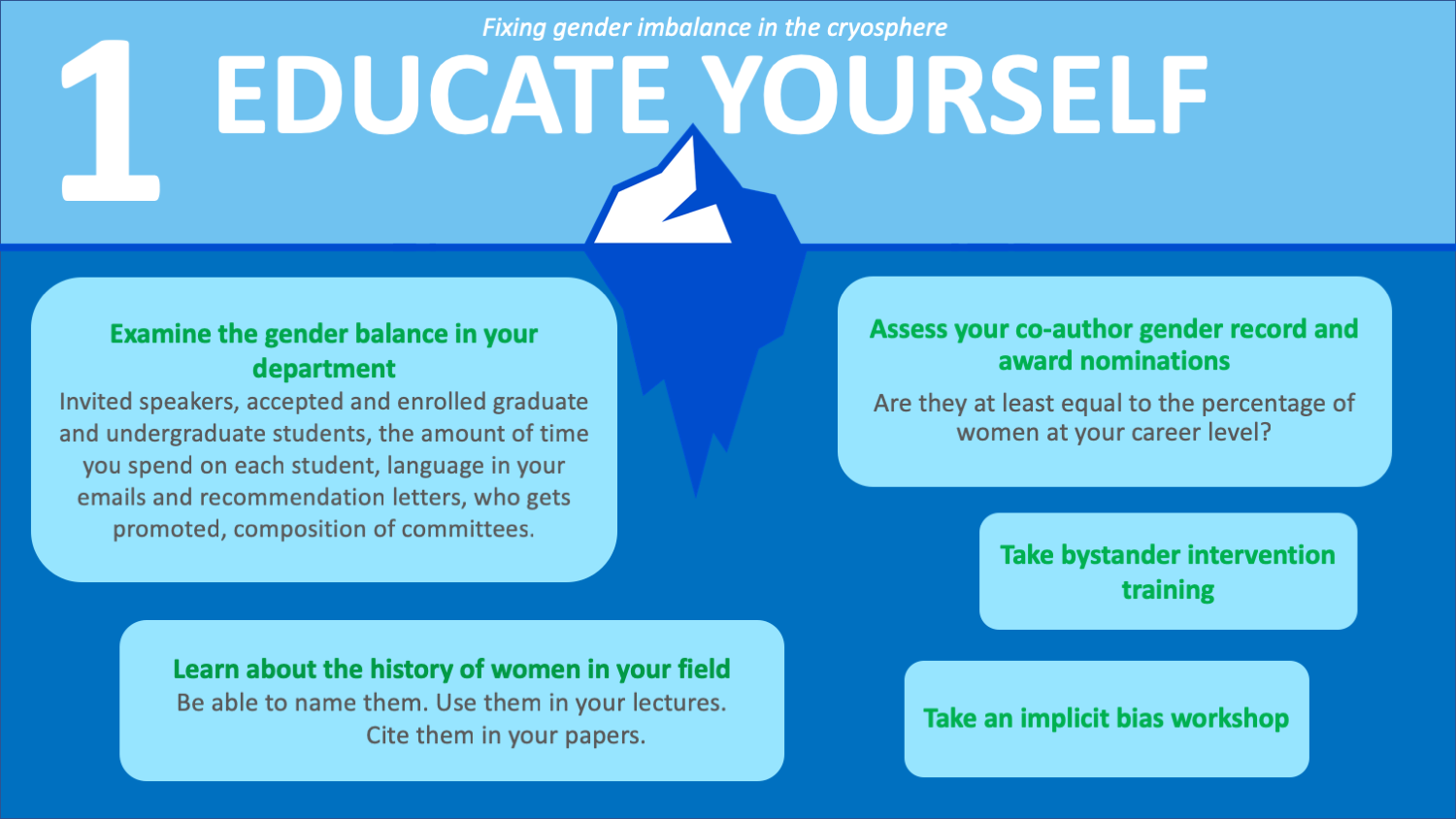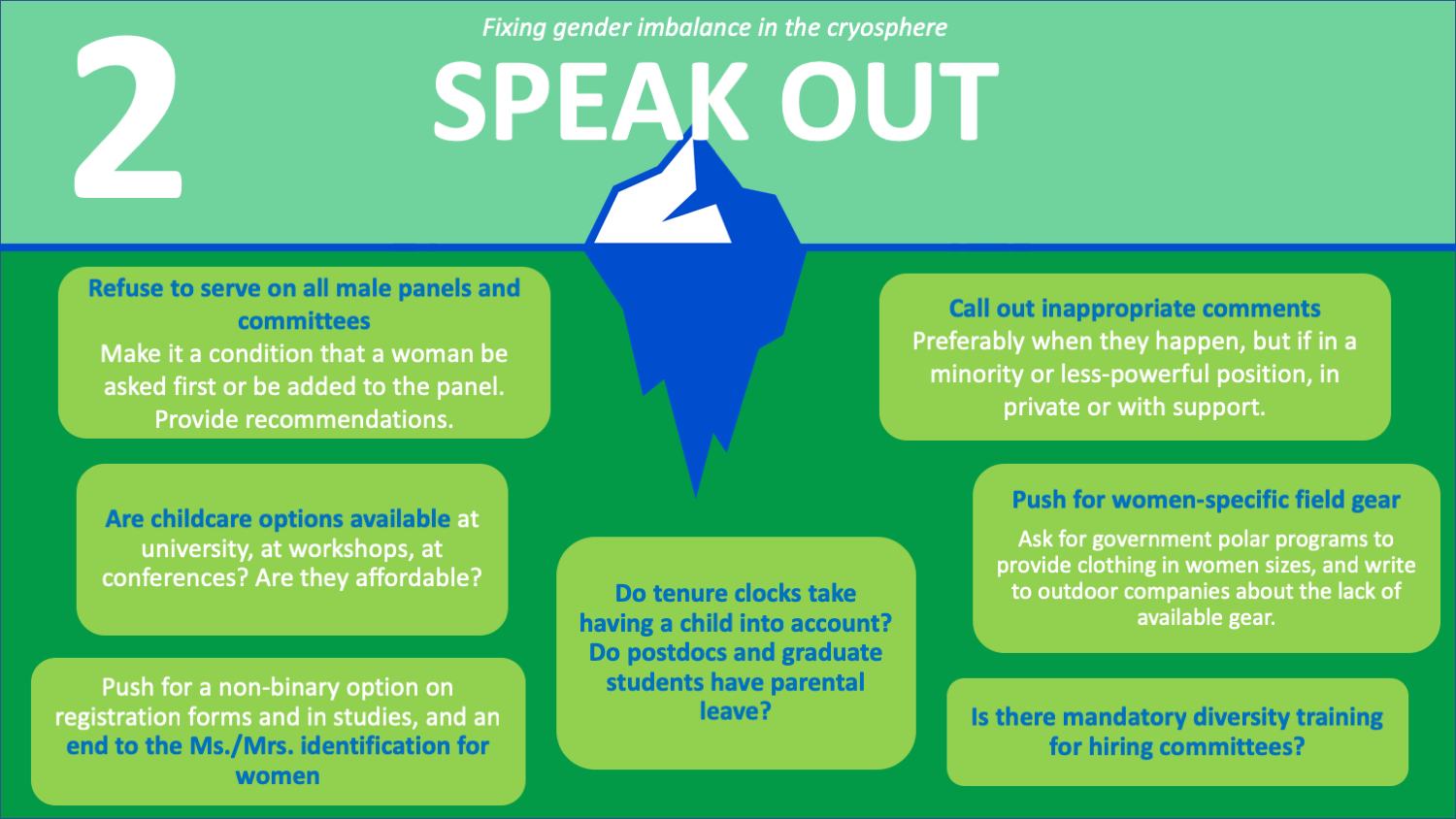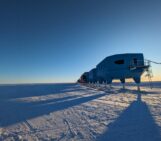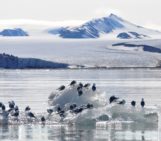
Figure 1: PhD student Gemma Brett conducts fieldwork examining variability in the distribution of the sub-ice platelet layer in McMurdo Sound, Antarctica [Credit: Florence Isaacs]
Today is International Women’s Day. As three early career glaciologists, we set out to investigate the state of gender diversity in the cryospheric sciences. Is there a better day for this than the day of recognition of the fight for women’s rights across the globe?
“The extreme nature of high alpine and polar environments made the rhetoric of mountaineering and glaciology heroic and masculine, which made both pursuits the embodiment of gentlemanly activity”
— Jaclyn R. Rushing
Women and Glaciers: Changing Dynamics in Sport, Science, and Climate Change
Descended from the earliest mountaineers and explorers, glaciology has been, like many sciences, long dominated by men. As today is International Women’s Day, we set out to understand gender diversity in the cryospheric sciences. With this blog post, we aim to provide two resources: 1) the most up-to-date statistics about gender in the cryospheric sciences and 2) a list of things that you can do to improve diversity in our beloved discipline.
As Lora Koenig and her co-writers succinctly stated:
“If we value diversity and believe our discipline will be at its best when every student has equal opportunity, then we must do more than talk; we must act. Awareness and data collection are part of ensuring a diverse field now and in the future.”
Note: Our use of ‘women’ is intended to encompass all those who are female-identifying. The only statistics and research on this topic that were available at the time of writing lean heavily on the classification of individuals as ‘male’ or ‘female’. We wish to highlight that these sources exclude those of us with a gender identity that does not fit within this binary, and emphasise that we are speaking within these limitations in this article. Also, while this article focuses on research about women within academia, the experiences of women involved in knowledge-gathering outside this formal structure are varied and important.
The gender gap in science
According to the UNESCO Institute for Statistics, fewer than 30% of the world’s researchers are women, and women in STEM fields (Science, Technology, Engineering and Mathematics) “publish less, are paid less for their research and do not progress as far as men in their careers”.
Figure 2 shows data from our blog’s host, the European Geosciences Union (EGU) – all sections considered – for the past two years. Women currently account for one-third of all EGU members. On the other side of the Atlantic, the American Geophysical Union (AGU) has a slightly lower percentage of women — about 30% of all members in 2018.
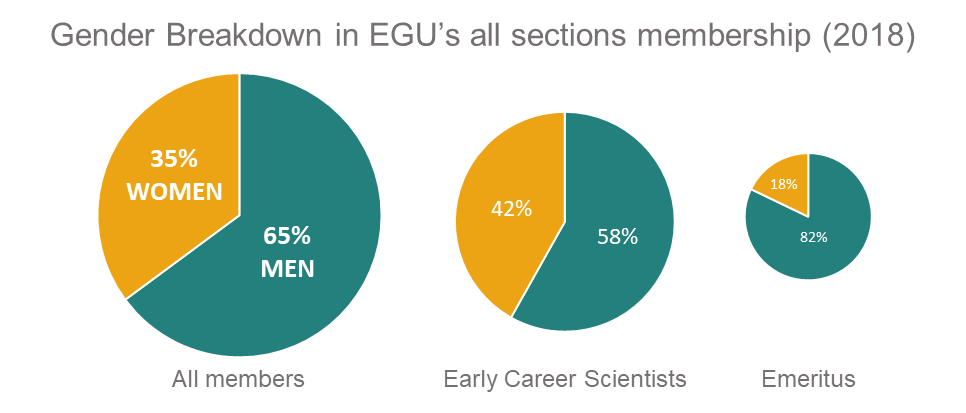
Figure 2. Gender breakdown in EGU membership data – all sections considered – for 2018. The numbers presented are valid as of 08/03/2018. These numbers are estimates as they account only for active members who have filled out their membership profile. Members are not directly asked what gender they are, but they have been asked to select their salute (Mr vs Ms/Mrs), and self-designate as early-career. Emeritus members are members older than 60 or retired. Width is not to scale [Credit: Barbara Ferreira, EGU Media and Communications Manager].
How does the cryosphere compare?
We reviewed data from the American Geophysical Union (AGU) and the International Glaciological Society (IGS). Unfortunately, the EGU Cryosphere section has not yet published a breakdown of gender diversity (it’s on its way!).
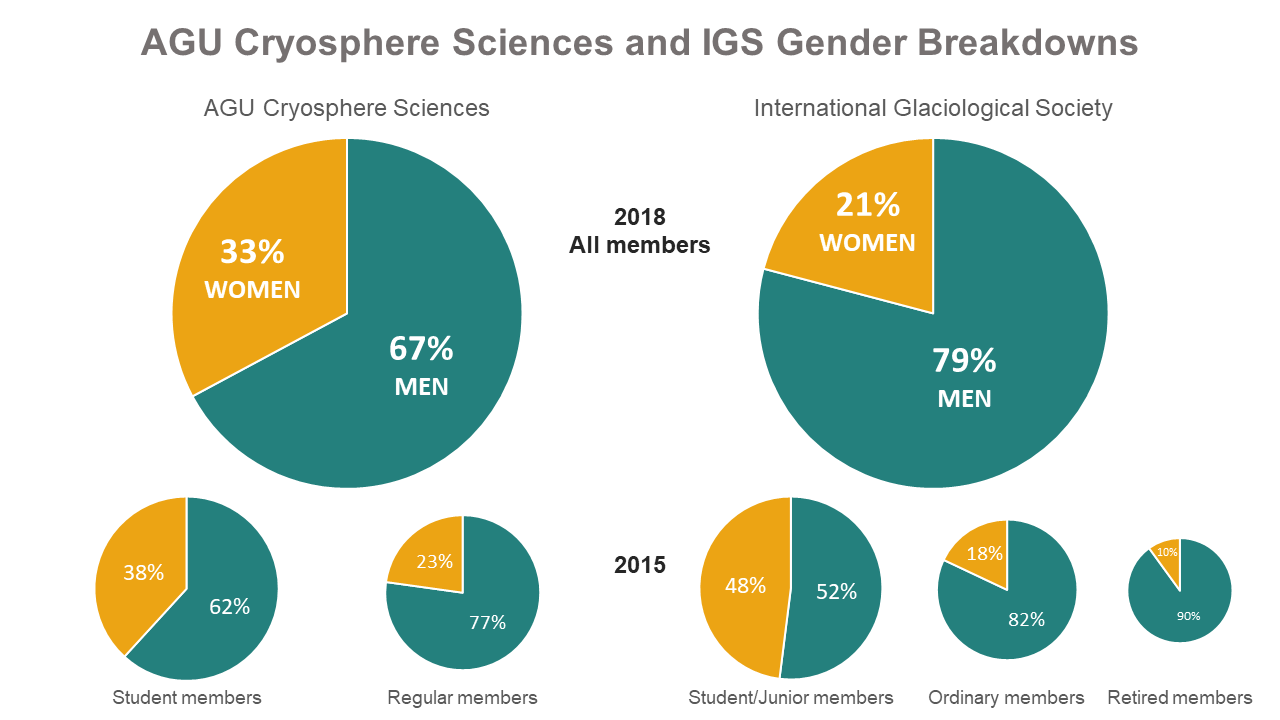
Figure 3. Gender breakdown in AGU Cryosphere Sciences and International Glaciological Society membership data for all members in 2018 and by career stage in 2015. Circle size is not to scale [Credit: Lara Koenig for AGU data and Louise Buckingham, Doug MacAyeal, and Francisco Navarro for IGS data].
Similar to the overall gender breakdown, women make up 32% of all the AGU Cryosphere members in 2018 (Fig. 3). The IGS had a lower percentage: about 20% of its 670 members could be identified as women by name, although this was not self-reported and some members’ gender could not be discerned.
One significant trend that has been noted in previous posts on diversity in the cryosphere is that the gender imbalance is inversely proportional to career stage — more women are joining as students. A similar trend was recognized in 2015 AGU Cryosphere and IGS membership data (Figure 3) as well as in recent Australian data showing that in STEMM (STEM + Medicine), women make up half of postgraduate students!
However this trend cannot yet be seen in senior academic positions. There are two causes. One, a supply problem: women were historically excluded from the sciences (see below). Two, a filtering problem: the “gender-filtered leaky pipeline” phenomenon describes how science progressively loses women as their scientific career evolves.
Many factors are responsible for women leaving the sciences. Awards, first authorships, and representation on boards and committees can play a big factor in whether scientists receive job offers or tenure. Do women receive nominations at a level at least proportional to representation? Data is limited on this front, but we have found that:
- In the EGU Cryosphere section, the last 14 Louis Agassiz Medal winners (recently renamed to honor Julia and Johannes Weertman), Dorthe Dahl-Jensen is the sole female recipient. About 40% of the outstanding student presentation awards, or the equivalent, were awarded to women, which is more or less in line with the gender proportions of students in IGS and AGU.
- In the AGU Cryosphere awards, Lara Koenig and others showed that there is little-to-no bias against women. These are granted proportionally (for example, Nye Lecturer awards reflect past gender diversity) — except in the Fellows category, which exhibits some bias against women.
- Across disciplines and around the world, there has been active encouragement to nominate women for awards.
- Scientific Editors from IGS (Journal of Glaciology) are represented by 26% of women.
Like the UNESCO effort to follow and explore the careers of women in science, we urge AGU, EGU, IGS, and other Arctic and Antarctic institutions and communities to track the retention and acknowledgement of early-career women. We need to retain women, not just recruit them.
Barriers to access or the origins of the gender gap
A 2013 study published in Nature identified that “Despite improvements, female scientists continue to face discrimination, unequal pay, and funding disparities”. This study has been reproduced in all shades and flavors. Here is a non-exhaustive list of factors that could contribute to the underrepresentation of women in the cryospheric sciences (most of the following points apply to any scientific field of study):
- Participating in conferences and presenting research is a mean of spreading scientific results, finding employment opportunities and funds, and obtaining awards and recognition. However, abstracts to conferences from male authors are more likely to be rated higher. It has also been shown that women were invited and assigned oral presentations less often than men for the AGU Fall Meetings, and also elect for poster presentations only more than men. White men are also more likely to receive a response from a potential PI despite identical resumes to a female applicant.
- Fieldwork is associated with a lack of safety and inclusivity: women bear the brunt of harassment in science — half of all women in science have been sexually harassed, and in a recent study on 95 Australian women who conducted fieldwork in Antarctica, 63% — 60 women — reported being harassed or sexually harassed in the field. Of those, 47 felt unable to take any action. Women are more likely to be on the receiving end of microaggressions, which have long-lasting impact.
- Historical barriers to participation in polar field work: there are few well-known examples of female scientists in history, a result of women being unacknowledged for their scientific contributions (e.g. Julia Weertman, until recently) or barred from participating in research. For example, the British Antarctic Survey barred women until 1987, when they allowed Liz Morris to join an expedition. Glaciology has long been – and still remains, despite recent improvements – a male-dominated field.
- Women are often the primary caregivers to children, family with mental illness, and aging parents or partners, on top of their work as researchers. Goulden et al. (2011) have shown that family formation like marriage and childbirth accounts for the largest leaks in the “pipeline” in the sciences. They also underline the limited benefits (such as paid maternity and parental leave) that are offered to scientists. As a consequence, in the US, nearly half of female scientists leave full-time science after their first child.
- The outdoor industry continues to be male dominated, e.g. in guiding careers, meaning that women are more likely to experience barriers to access. Outdoor gear and tools, including gear provided by the U.S. Antarctic Program, are exclusively or heavily fit for men, making fieldwork more difficult and often more dangerous for women. New Zealand is one of the only countries that has women-specific polar clothing.
What can we do?
So what’s the state of gender in the cryosphere? We are making progress. Indeed, the gender balance in the cryosphere is improving:
- Hulbe et al. [2010] documented the sex of first and second authors in International Glaciological Society journals from 1948 to 2010. Female authors comprised about 5% of authors from the 1950s through the 1980s, 13% in the 1990s, 16% in the 2000s, and roughly 20% by the end of the study.
- An analysis of IGS memberships numbers indicates that the proportion of female members has increased over time.
- The percentage of women in the American Geophysical Union Cryosphere section rose from around 26% in 2013 to about 32% in 2018.
As early career scientists, this is heartening — the efforts to improve gender diversity are working. We, as early-career women, stand not just on the shoulders of the pioneering women that opened the door, but of a whole community reckoning with its biases. The thing we’re most often asked is “What can I (as a male PI, as an institutional leader, as a PhD student organizing seminars) do?”. The figures below gather a few ideas about where to start. Please comment with your own! Of course, these also apply to the broader spectrum of physical sciences and academia.

Fixing gender imbalance in the cryosphere [Credit: Florence Isaacs, Elizabeth Case and Violaine Coulon]
Conclusion
With this post, we hope to open discussions about gender diversity in the cryospheric sciences, how it’s changing (for the better), and what you can do to help increase diversity. Others have written recently and extensively about this, including Christina Hulbe, Lora Koenig, and others. We have put together a list of some of these resources below. We will continue to update this, so please let us know if there is something that needs to be added.
We also want to acknowledge the severe lack of racial and ethnic diversity, and a lack of research on the experiences of queer and disabled people in the geosciences. Where we have made strides for some women, we have left behind many others…
Further resources
- If you want to know more about the women’s history in Cryospheric Sciences, have a look at this paper: Hulbe, C. L., Wang, W., & Ommanney, S. (2010). Women in glaciology, a historical perspective. Journal of Glaciology, 56(200), 944–964.doi:10.3189/002214311796406202.
- Three reasons why gender diversity is crucial to science.
- Do you have to be a tough man to be a polar researcher?
- AGU100 Cryosphere Interviews for StoryCorps: Listen to Cryosphere Section members interviewed on “How to be mothers and cryospheric scientists? and ”Being pioneering women researchers in the Cryosphere”.
- Carey, M., Jackson, M. Antonello, A. Rushing, J. 2016. Glaciers, gender, and science: A feminist glaciology framework for global environmental change research. Progress in Human Geography. Vol 40, Issue 6, pp. 770 – 793. https://doi.org/10.1177/0309132515623368
- Help us fight patriarchy, one comic strip at a time! – A blog post from the EGU-blog’s Geodynamics division.
- Image of the Week – Inspiring Girls!
- Have a look at the Women in Polar Science Facebook page!
Edited by Clara Burgard
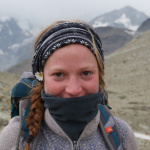 Violaine Coulon is a PhD student of the glaciology unit, at the Université libre de Bruxelles (ULB), Brussels, Belgium. She is using a numerical ice sheet model to investigate the dynamics and stability of the Antarctic Ice Sheet for the past 1.5 million years. She also investigates the sensitivity of the Antarctic Ice Sheet to the incorporation of lateral variability in the viscoelastic Earth structure across Antarctica.
Violaine Coulon is a PhD student of the glaciology unit, at the Université libre de Bruxelles (ULB), Brussels, Belgium. She is using a numerical ice sheet model to investigate the dynamics and stability of the Antarctic Ice Sheet for the past 1.5 million years. She also investigates the sensitivity of the Antarctic Ice Sheet to the incorporation of lateral variability in the viscoelastic Earth structure across Antarctica.
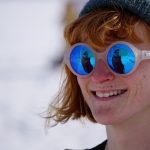 Florence Isaacs is a PhD student at Victoria University of Wellington’s Antarctic Research Centre, New Zealand. Her current research examines the relationship between Southern Hemisphere climate variability, sea ice, and the East Antarctic Ice Sheet. She is passionate about increasing diversity in science, and tweets at @flisaacs.
Florence Isaacs is a PhD student at Victoria University of Wellington’s Antarctic Research Centre, New Zealand. Her current research examines the relationship between Southern Hemisphere climate variability, sea ice, and the East Antarctic Ice Sheet. She is passionate about increasing diversity in science, and tweets at @flisaacs.
 Elizabeth Case is a PhD student at Columbia University and the Lamont-Doherty Earth Observatory investigating ice deformation through radar and modelling. She rode her bike across the country in 2015 as a co-founder of Cycle for Science, and continues to advocate for adventure-based science education. You can find her @elizabeth_case.
Elizabeth Case is a PhD student at Columbia University and the Lamont-Doherty Earth Observatory investigating ice deformation through radar and modelling. She rode her bike across the country in 2015 as a co-founder of Cycle for Science, and continues to advocate for adventure-based science education. You can find her @elizabeth_case.

